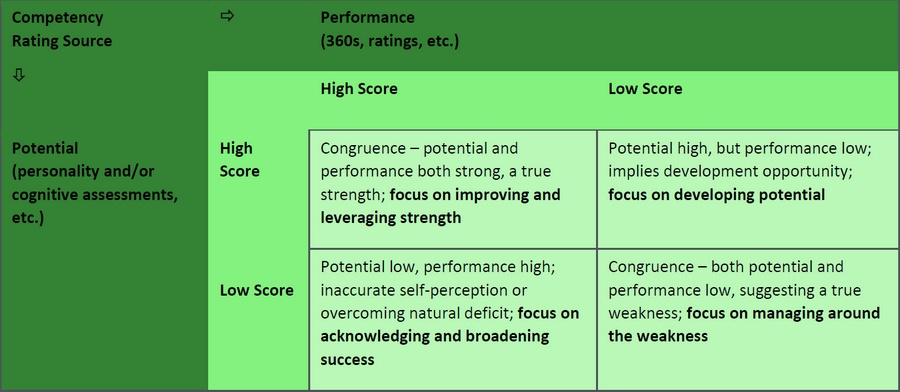“Coaching” in a workplace context can mean many different things. Sometimes it’s about remediating a fault or addressing misconduct, other times about preparing for a particular challenge or a new role, yet others about reconciling personal and work issues. While all of these can be legitimate interventions, I prefer to think about workplace coaching as quite analogous to coaching in sports — it’s about optimizing potential to achieve peak performance.
Note that I didn’t say it was about correcting faults or overcoming weaknesses. It’s rare that a weakness can be turned around to transform an individual’s career. It is strengths, rather, that are the foundation of success and that need to have a prime seat at the coaching table.
In a coaching context we usually have a fair bit of information about the person being coached. We might have access to performance evaluations and to the individual’s own self evaluations. In some circumstances interviews with managers and co-workers can be arranged to gather information about the coachee and in particular about his or her performance strengths.
Ideally, we’d like to have some objective assessment information as well. This can inform understanding about both competency potential (through cognitive and personality assessments) as well as actual performance (through 360º survey tools).
Whatever the source of the information it’s very valuable to have a concrete sense of both the individual’s competency potential and his or her actual performance. When we have that information, coaching objectives become much clearer, and the coachee has an opportunity to think through just what kinds of development activities will bring the greatest return on investment over the medium term.
The chart below, adapted from one used in a presentation I made to the 2013 Convention of the Society for Industrial/Organizational Psychology, illustrates some of the implications. If we have information about competency potential (usually derived from psychological assessment) as well as information about actual competency performance (360s, manager ratings, etc) we can imagine a 2 x 2 grid for each relevant competency, with each row and column representing high or low scores. For a particular competency, only one of the four cells will reflect reality. A “true strength” is one where both potential and performance rate highly; a “true weakness” is likely where both potential and performance rate low.
Even more interesting, and often more useful, are those competencies where there is a disconnect. Performance could be low, even though apparent potential is high, for instance. I’m inclined to think of this situation as one with significant upside — it implies that the individual has potential in an area, but hasn’t yet properly developed that potential. It becomes a good candidate for development focus.
And we do sometimes see a situation where an individual appears to have low potential in an area but is rated by others as performing well. There may be a failure on the part of individuals to accurately report their traits on personality inventories, or they may have worked hard and successfully to overcome a natural deficit. Useful to know, and to think about as part of development planning.

Of course, not every situation is so neat and tidy. Sometimes competency potential scores are in the mid-range, not especially low and not especially high, as is sometimes the case with performance data. It’s still useful to see how assessed potential matches up with actual performance.
The bottom line, of course, is the actions that are taken based on the information. A coach needs to be focused on helping the coachee navigate several steps of the development process — deciding on development priorities that represent a balance among leveraging/improving strengths, building on potential and managing weaknesses; establishing a plan to address the priorities; following through on the plan; and, finally, evaluating success against objectives.
As I said, it’s not unlike coaching in sports. A coach seeks to take the natural skills and abilities of players, point them to the kind of role where those skills and abilities will be most useful, and help them to achieve the full potential of their strengths while minimizing the impact of weaknesses.
